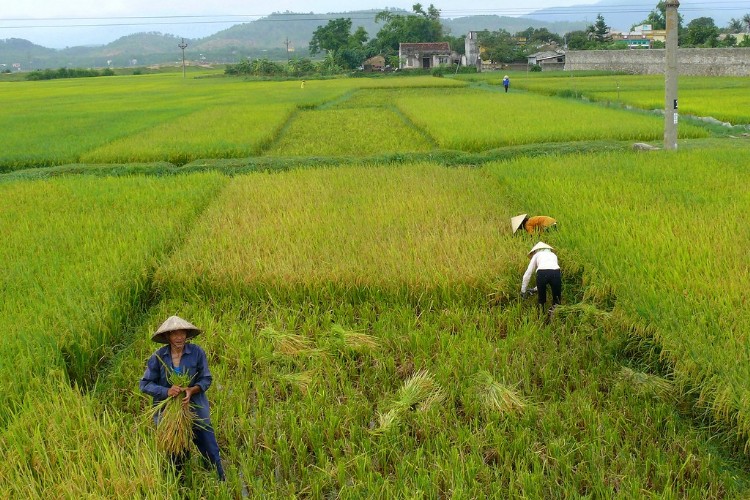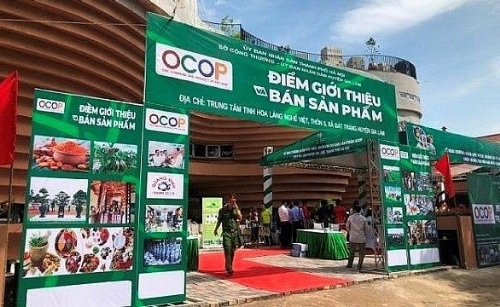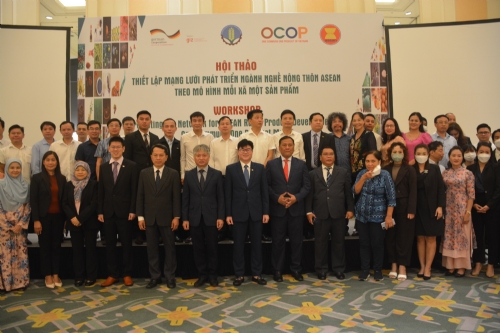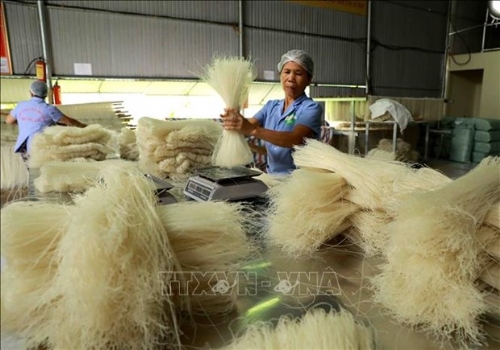Environment Quality Improvement in Focus for Rural Development
Monday, May 18, 2020 14:22

Having successfully improved environmental quality in new rural development, many rural communes now have picturesque villages and roads, garbage-free rivers, flower roads and green trees. These typical models have given a totally new facelift to many communes, hamlets and villages and raised people’s livelihoods. Nevertheless, environmental pollution is still growing and there is a need for solutions for the next phase to maintain results and avoid wasting investment resources.
Many changes
According to a recent report by the Vietnam Environment Administration, localities have invested in environmental improvement and issued specific mechanisms and policies on environmental protection, based on actual conditions, to unlock local advantages to accelerate the process of completing environmental criteria in building new rural areas. Regulations on management of cottage industry villages made decisive changes. The Ministry of Agriculture and Rural Development advised the government to clearly define rural crafts for focused management. Regulations on environmental protection of craft villages and non-craft villages are also gradually being separated and clarified.
In the 2011-2015 period and the period from 2016, with large-scale concentrated solid waste treatment approach, many localities have invested in methodical and large-scale treatment systems at district and inter-district levels, such as Nghia Dan (Nghe An), Cam Xuyen (Ha Tinh), Uong Bi (Quang Ninh), Tam Diep (Ninh Binh) and Thanh Liem (Ha Nam). Many communes and towns in Bac Giang, Vinh Phuc, Phu Tho, Quang Ninh, Nam Dinh, Thai Binh, Hai Duong, Thanh Hoa, Bac Lieu and Can Tho City have invested in domestic and foreign waste incinerators. In fact, some localities have well treated domestic solid waste, such as Ha Tinh, reducing the total amount of waste released into the environment by 60%. In Dong Nai, the amount of domestic solid waste collected and treated is about 1,838 tons a day, reaching 98.1%. The rate of solid waste disposal is only about 43%.
To date, the country has more than 5,800 communes meeting environmental criteria. In order to ensure environmental criteria, localities have applied creatively and issued many mechanisms and policies suitable for practical conditions to accelerate the achievement of this criterion. Typically, Bac Giang, Thanh Hoa and Phu Yen provinces have introduced mechanisms and policies to support collecting and treating solid waste and invested in incinerators to build green, clean models. Many landscaping models have been adopted by villages and hamlets, including roads, garbage-free rivers, landfills turned into flower gardens. In Dong Nai, Hau Giang, Tra Vinh, Ha Tinh and Nam Dinh provinces, more than 50% of districts have flower roads.
Limitations need to be addressed
According to the Ministry of Natural Resources and Environment, the application of environmental criteria in the new rural development still reveals many limitations of awareness and responsibility, deployment, management and operation, technology and funding source for environmental protection infrastructure. The application method is still confusing because it is necessary to identify who constructs and protects the rural environment and landscape. The government only creates motivation, shows ways of doing and supports people to implement. The confusing selection of domestic waste treatment technology in residential areas and craft villages led to resource investment wasting.
In fact, State-funded and operated environmental protection works have revealed many weaknesses, resulting in low investment efficiency. The mechanism that the State invests and enterprises operate still poses a lot of problems and shortcomings that restrict investment efficiency in new rural construction resources. The application of the principle that “polluters are obliged to treat pollution” to rural environmental protection is very limited. Residents, manufacturers and business households still mainly rely on the State budget to deal with pollution.
The environmental criteria include many targets and implementing units, resulting in difficulty for integration. This is one difficult criterion in practice because of its instability, constant changes, restrictive impacts from other infrastructure criteria. Localization is taken into account but it is inappropriate. Meanwhile, public communications on local environmental protection are still limited and public awareness has not changed much.
Green rural areas
Mr. Vo Tuan Nhan, Deputy Minister of Natural Resources and Environment, said, landscaping, sanitation and environmental protection should be carried out drastically, continuously and persistently. Innovative thinking and effective ways of doing are needed to make the countryside green and ensure environmental friendliness. Central and local authorities and agencies should focus on key issues to achieve and sustainably maintain environmental criteria in building new rural landscapes in 2020 and beyond. Provinces and cities consider and approve specific plans for rural solid waste management, and approach the circular economy principles in waste collection, recycling and reuse.
Provinces and cities will soon formulate and carry out centralized and decentralized management plans on rural wastewater; upgrade canals, ditches, ponds and lakes; promote ecological values, microclimate and landscaping; speed up communications and awareness raising for officials and rural residents, and scale up new models of rural residential areas.
More tasks need to be further implemented, like perfecting institutional frameworks, regulatory policies and guidelines, supporting the deployment of localized environmental criteria, issuing mechanisms and policies to attract private enterprises to invest in and operate environmental protection infrastructure by promulgating and applying price mechanisms on environmental protection services publicly and transparently.
Duy Anh

 THE PROGRAM COOPERATED WITH CENTRAL COORDINATION FOR NEW-STYLE RURAL DEVELOPMENT
THE PROGRAM COOPERATED WITH CENTRAL COORDINATION FOR NEW-STYLE RURAL DEVELOPMENT
Other news
- HANOI: Promoting the consumption of craft village products and developing community tourism(11/5/2022 3:16:04 PM)
- Chuong My: Effectiveness from the One Commune One Product Program(11/3/2022 10:04:10 AM)
- Thanh Hoa develops OCOP products(11/1/2022 1:30:31 PM)
- Promoting the network for Asia Rural Product Development on one commune one product(8/30/2022 9:43:23 AM)
- Phu Tho eyes 56 new 3-star OCOP products for 2022(8/23/2022 3:09:56 PM)
- Opening of the OCOP product introduction week in Hanoi in 2022 in Phuc Tho district(8/1/2022 3:28:38 PM)
- Evaluation and classification of OCOP products Hoan Kiem District in 2022(7/27/2022 10:10:23 AM)
- Hanoi turns to green, sustainable agricultural sector(6/28/2022 4:10:22 PM)
- OCOP Forum in the Mekong Delta - Dong Thap 2022: Opening up great opportunities for regional products.(5/4/2022 2:38:13 PM)
- Over 1,000 spice products on display in Ho Chi Minh City(4/29/2022 2:34:02 PM)
The featured news
-
HANOI: Promoting the consumption of craft village products and developing community tourism
-
Promoting the network for Asia Rural Product Development on one commune one product
-
Phu Tho eyes 56 new 3-star OCOP products for 2022
-
Opening of the OCOP product introduction week in Hanoi in 2022 in Phuc Tho district
-
Evaluation and classification of OCOP products Hoan Kiem District in 2022






